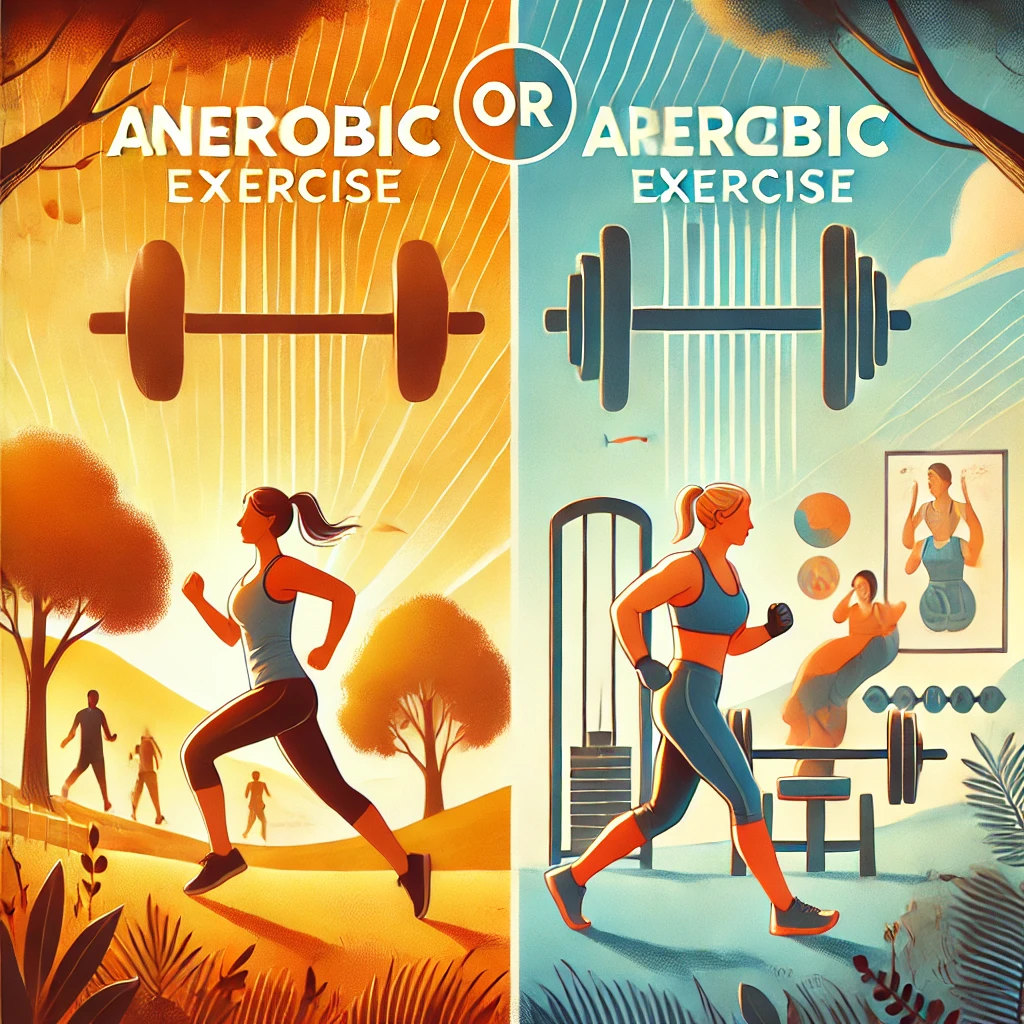When it comes to weight loss, not all exercises are created equal. Aerobic and anaerobic exercises play different roles in a fitness plan, and understanding these differences can help you choose the right type of activity to maximize your weight loss goals. In this article, we’ll break down the benefits of each type of exercise, how they impact weight loss, and how to incorporate them effectively into your workout routine.
Understanding the Basics: What Are Aerobic and Anaerobic Exercises?
Aerobic Exercise: Also known as “cardio,” aerobic exercise involves sustained activities that increase your heart rate and improve oxygen flow throughout the body. These exercises are typically moderate in intensity and can be performed for extended periods.
Examples:
- Running
- Swimming
- Cycling
- Dancing
Anaerobic Exercise: This type of exercise involves short bursts of high-intensity activity that don’t rely on oxygen for fuel. Instead, anaerobic workouts use energy stored in the muscles, which can be quickly depleted during intense activity.
Examples:
- Weightlifting
- Sprinting
- High-intensity interval training (HIIT)
- Plyometrics
How Each Type Affects Weight Loss
1. Calorie Burn and Fat Loss
Aerobic Exercise:
- Burns calories during the workout session.
- Helps create a calorie deficit that can lead to weight loss.
- Tends to burn more calories during a single session compared to anaerobic exercise of the same duration.
- Ideal for beginners and those looking to improve overall cardiovascular health.
Anaerobic Exercise:
- Burns fewer calories during the actual workout but has a significant “afterburn” effect (excess post-exercise oxygen consumption, or EPOC). This means your body continues to burn calories for hours after the workout.
- Helps build lean muscle mass, which boosts your resting metabolic rate and helps burn more calories throughout the day.
Which Is Better for Weight Loss?
Both aerobic and anaerobic exercises are effective for weight loss, but they work best when combined. Aerobic exercises are great for immediate calorie burn, while anaerobic exercises build muscle and increase metabolism over the long term.
Benefits of Aerobic Exercise for Weight Loss
1. Improves Heart Health
Regular aerobic exercise strengthens the cardiovascular system, making your heart more efficient at pumping blood. This helps maintain energy levels and supports overall health.
2. Sustainable for Longer Periods
Aerobic exercises like walking or jogging can be done for longer durations, which contributes to greater total calorie burn. This makes them ideal for those who prefer steady, lower-intensity workouts.
3. Improves Endurance
Building endurance helps you perform daily activities with ease and can lead to longer, more effective workout sessions over time.
Benefits of Anaerobic Exercise for Weight Loss
1. Builds Muscle Mass
Anaerobic exercises like weightlifting and HIIT help build and preserve lean muscle mass. Muscle is metabolically active, so the more muscle you have, the more calories you burn at rest.
2. Increases Afterburn Effect
The afterburn effect from anaerobic exercise can significantly boost your metabolism for up to 24 hours after your workout. This can contribute to greater total calorie expenditure and enhanced fat loss over time.
3. Time-Efficient Workouts
Anaerobic workouts are typically shorter but more intense. For those with a busy schedule, 20-30 minutes of high-intensity training can be as effective as longer, steady-state cardio sessions.
Combining Aerobic and Anaerobic Workouts for Optimal Weight Loss
For the best weight loss results, a mix of aerobic and anaerobic exercises is ideal. Here’s how to incorporate both into your fitness plan:
Weekly Workout Plan:
- Day 1: Aerobic exercise (45 minutes of running or cycling)
- Day 2: Anaerobic exercise (30 minutes of strength training or HIIT)
- Day 3: Active recovery (yoga or walking)
- Day 4: Aerobic exercise (swimming or dancing)
- Day 5: Anaerobic exercise (weightlifting focusing on different muscle groups)
- Day 6: Combination training (30 minutes of circuit training combining cardio and strength)
- Day 7: Rest or light stretching
Tips for Combining Both:
- Warm-Up and Cool Down: Always start with a warm-up and end with a cool-down to prevent injury and promote recovery.
- Balance Intensity: Alternate between high-intensity anaerobic days and lower-intensity aerobic days to give your muscles time to recover.
- Stay Consistent: Consistency is key for any weight loss or fitness goal. Aim for at least 150 minutes of moderate aerobic activity or 75 minutes of vigorous activity per week, plus strength training on two or more days.
How to Maximize Your Results
1. Track Your Progress
Use fitness apps or wearable devices to monitor your activity, heart rate, and calories burned. This can help you understand which type of exercise yields better results for your body.
2. Nutrition Matters
Exercise alone won’t lead to significant weight loss if your diet isn’t balanced. Incorporate lean proteins, healthy fats, and complex carbohydrates to fuel your workouts and aid recovery.
3. Stay Hydrated
Hydration is essential for maintaining energy levels and aiding muscle recovery. Drink water before, during, and after workouts to stay hydrated.
4. Prioritize Rest
Rest days and adequate sleep are crucial for recovery and performance. Overtraining can lead to injury and diminished returns on weight loss.
Final Thoughts
Both aerobic and anaerobic exercises offer unique benefits for weight loss. While aerobic workouts help burn calories and improve cardiovascular health, anaerobic exercises build muscle and increase your metabolism. Combining both can give you the best of both worlds and help you achieve your weight loss goals efficiently. By creating a balanced fitness routine, tracking your progress, and maintaining healthy habits, you can set yourself up for sustainable weight loss and improved overall health.
Share this content:



